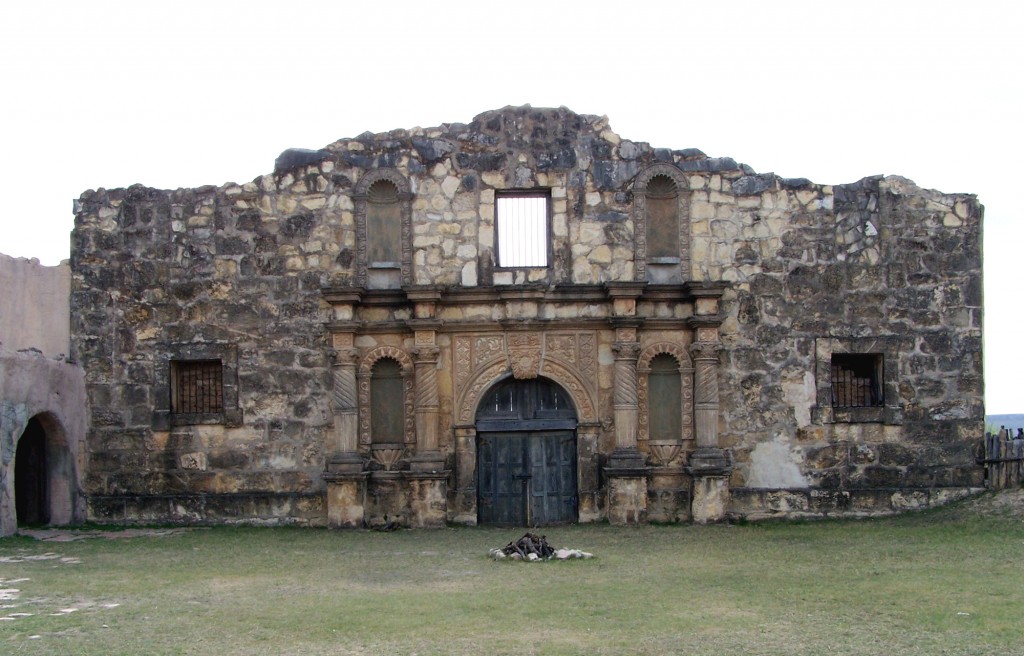by Amias Maldonado
As a child born and raised in San Antonio, I too remember the silence. On one side of the muted chasm, there was the Alamo of the Texas history schoolbooks; the Alamo of the class field trip; the Alamo in “Alamo: The Price of Freedom,” displaying the nefarious dictator Santa Anna and the independence-loving Texans. On the other side, there was life in San Antonio: diverse, multiethnic, celebratory of Mexican culture, coexistent. How these two worlds informed each other was something you decided for yourself. The meeting of history and memory and how they inform our present(s) is something any visitor to San Antonio must uncover for themselves; that is, until a reading of Remembering The Alamo.
Richard Flores’s Remembering the Alamo is not so much an attendant to historical inaccuracies – although it certainly does that as well – as an examination of why and how inaccuracies were produced and codified in the service of changing socioeconomic power relations between Anglos and Mexicans during the beginning of the period Flores terms “The Texas Modern.” According to Flores, post-annexation Texas utilized the Mexican ranching social structure to manage increasing ethnic tensions, producing a peace that allowed new systems of relations – specifically racial and labor segregation brought upon by capitalism and technological advance – to eventually reify by the late 19th century. These new systems of social inequality required a rationale: they needed a devalued Mexican Other to justify the new structures which privileged Anglos. In to this breach, argues Flores, steps the Alamo.
The brilliance in Flores’s scholarship lies in his positioning of the Alamo as a place and as a project. The Alamo and its accompanying “approved legends” are doused in the baubles of historical evidence, but it exists not as a historical site but as a living cultural memory that “reinforces a collective memory of Texan superiority” (Flores 33). The Alamo narrative, presented as fact, is actually a cultural production representing the interests of the elite – which of course would come as no surprise to Marx. Furthermore, as an active site, the Alamo invites the viewer to produce connections between the lived present and the past – creating an ahistorical space in existing social relations that are rechristened and rejustified. Flores’s detailing of the Alamo’s dialectical relationship between history and culture, as well as the importance it plays in shaping the ways Anglo-Mexican society interacts, was to me the most illuminating section of the book.
Flores spends the remainder of the book introducing evidence that supports the theoretical claim outlined above. The relocation of Mexican cultural space to the Alamo area as well as the repurposing of open plaza space under the rubric of private property helps Flores demonstrate other ways in which the “Texas Modern” used spatial relations to signify and reify social inequalities. A careful mapping of the political fights between the De Zavala and Driscoll wings of the Daughters of the Republic of Texas gives the reader a tipping point at which the romantic, rugged individualist Alamo narrative was codified. While I was originally skeptical, Flores’s analysis of both women’s literary works does indeed bolster his case, demonstrating Driscoll’s social outlook and need to absolve herself from the economic displacement of Mexicans as well as the ways in which De Zavala’s legends and letters demonstrate how she used her pursuit of history to manage contradictory identities. I found Flores’s rumination on “Texan” as an identity that holds the contradiction between Mexican and American in tension highly perceptive here.
After demonstrating what the Alamo represents, why it is used as representation, and who benefits, Flores moves to the “how” of the question through a content analysis of prominent Alamo movies. Flores shows the ways in which the Alamo is refashioned according to the historical moment, although always justifying existing social relations between Anglo and Mexican is central until the 1960 John Wayne picture, where Flores argues the Alamo has already arrived as a master symbol and instead serves as a Cold War endorsement of American liberty and personal freedom. The depiction of Mexicans as sexually deviant strongly connects the cinematic narratives with Driscoll’s own project. Theoretically, I found this section equally insightful, especially his point that “the partialities of the visually projected are taken as complete or whole truths” (Flores 98-9) and his discussion of the role of voice in producing whiteness through cinema.
Unlike other works that rely heavily on deep literary or cinematic analysis, I found little to disagree with in Remembering the Alamo. Flores goes to pains to create connections between the work of Driscoll, De Zavala, or the filmmakers and the lived social and economic conditions, thereby bolstering their case. He produces a vision of an Alamo that is superficially historic. After his analysis peels this veneer away, however, we are left with a cultural production, a master symbol that justifies and produces domination. Like Flores and me, and like generations of children after, part of being Texan is to come to this mission and expose yourself to a collective mythology, a mythology that is draped in the past but is enacted every day in the streets of San Antonio. Thanks to Flores, Sam Houston’s call to “Remember the Alamo!” takes on new meaning. The Alamo – the project, not the place – is now something I will never forget.

